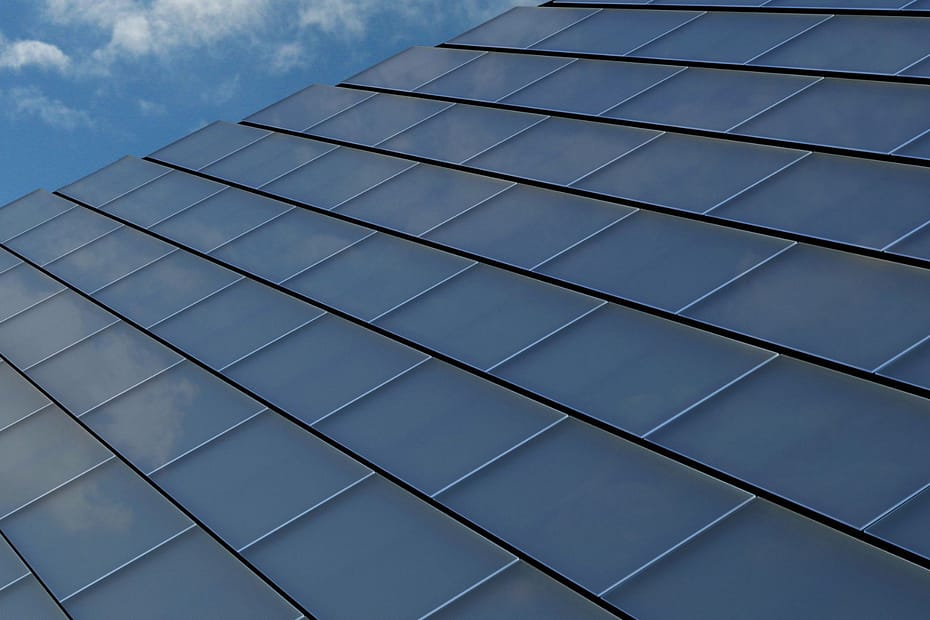Today, more and more homeowners are opting to put solar panels on their roof in order to offset the rising cost of electricity. When considering making the leap to solar, homeowners often wonder, how much will solar cost? Will the solar panels generate enough power to lower utility expenses? Which contractor should do the work? These are all great questions that can help you decide whether or not to install solar panels on your roof. Our solar roof cost calculator can answer a lot of those questions in just seconds.
But have you ever wondered how do solar panels work? While it might seem a bit complicated, it’s also fascinating to understand how solar panels can harness the sun’s energy and convert it into usable electricity for your home. In this blog post, we’ll answer the question, how do solar panels work and fill you in on what you need to know before installing solar panels on your home.
How Does Solar Work?
Solar panels contain solar cells, which work to absorb the sun’s rays. As they store and collect sunlight, they create direct current (DC) electricity. But before this electricity can be used in your home, it first needs to be converted to alternating current (AC) electricity. In order to do this, your home’s solar system will include something called an inverter which works to convert the energy from DC to AC. Then, this energy is stored in a solar battery, which provides energy for your home. Any excess energy that’s collected but not used can be sent to the grid, which can provide you with a valuable energy credit.

What Are Solar Panels Made Of?
Solar panels are the main component of residential solar energy systems. The solar cells contained in solar panels are made primarily of silicon, which is a semiconductor. Silicon is what converts sunlight into electricity. Solar panels are arranged in a grid-like pattern that’s protected by an outer casing made of glass. The average lifespan of most solar panels is about 30 years, and most roofing contractors are skilled in installing solar panels.
What Are The Different Parts of a Solar Panel?
In order to better understand the question of how do solar panels work, it’s helpful to have knowledge of the different parts that make up a solar panel. We’ve listed them below for your reference.
- Glass casing. This is the outermost layer of the solar panel, providing protection for the delicate interior parts. Regular cleaning and maintenance can help the glass to absorb the most sunlight possible.
- Solar cells. These are contained within the glass casing, where they absorb the sun’s rays to generate electricity.
- Insulation. At the very bottom of the solar panel exists a layer of insulation, which serves to protect against humidity buildup, and helps channel the heat in one place.
- Anti-reflective coating. This is the outermost coating of the glass panel, and it works to channel the sun’s rays into the solar panel rather than bouncing off of it.
- 12-volt wire. This helps regulate the energy that goes to the inverter.
- Inverter. Technically not part of the panel but a critically important part of your home’s solar system nonetheless, the inverter works to convert DC energy to usable (AC) energy.
A Step-by-Step Guide to How Do Solar Panels Work
Now that you know about how solar energy works, and the different parts of a solar panel, it’s time to lay out the step-by-step process solar panels use. Instant Roofer can help you find a roofer in your area that can explain this processes even better.
- Solar panels are installed on your roof
- The sun’s rays shine down on the solar panels
- Solar cells contained with the panels collect the sunlight in the form of DC energy and direct it to an attached inverter.
- The inverter then converts the DC energy into AC energy.
- This energy goes into your home via a meter.
- If your home requires more energy than your solar panels have collected, the system will automatically switch to the grid to draw energy from it.
- If your home requires less energy than your solar panels have collected, the system will push the excess energy to the grid for others to use, and you’ll receive a credit for that amount of energy.
Fact Checked by Christin Perry 8/2/2024

